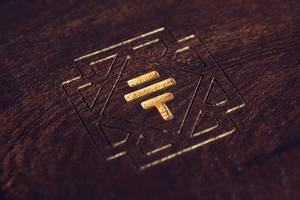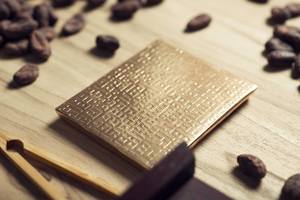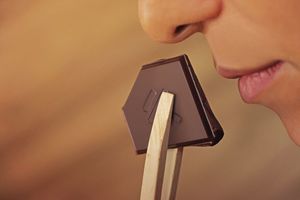Ten chocolate bars. Seven people. And a lot of conversation. Last week's Underground Chocolate Salon was great fun, and I want to tell you about it.
I’ve always been jealous of Paris in the 1920s, when artistic and literary luminaries gathered at Gertrude Stein’s house to talk and hang out: Picasso, Cézanne, Joyce, Eliot, Cocteau. Only one thing would have made it better: chocolate. That’s why I started what I’m calling the Underground Chocolate Salon, for like-minded (or not so like-minded) people to get together and talk chocolate, as well as enjoy one another’s company.
If you want a spot at the next one, in New York on MAY 25 from 6:30 to 8 PM, email me immediately at megan@chocolatenoise.com to let me know and I’ll send you the details and location.
In the meantime here are some notes from last week’s salon.
This time everyone brought a bar or two that they liked or that they wanted to try, so we had a huge variety. One person noted that after reading my thoughts about Askinosie's new whiskey bar, she bought a few as gifts. When she shared them with friends, a few people disliked it so much they spit it out! I'm curious if they were surprised by the unique tastes in the chocolate because they had never tried bean-to-bar chocolate or if it was the whiskey taste itself that bothered them (she wasn't sure). It's true that trying chocolate with strong flavor notes can surprise and overwhelm people at first — in both good and bad ways.
Anyway, on to the tastings.
Michel Cluizel 66% Mexico
Smells smoky and earthy, tastes of red fruit and raisins. Includes vanilla, which intensifies/throws everything off.
French Broad 68% Nicaragua
"Smells like Taza," something stone and mineral. Tastes nutty, very dark roast, more bitter. Licorice. Acidity in front.
Woodblock 70% Peru
Tastes acidic and of red fruit. Coarser texture, fudgy, thick bar. Not a lasting bar, has a short finish. A bit astringent.
Durci 70% Rio Caribe, Venezuela
Smells of herbs and licorice. Tastes sweet and of herbs and licorice, maybe horseradish. Nice texture, snappier, definitely a lot of added cocoa butter in this one. Too buttery for some people, flat. No astringent aftertaste.
Dandelion 70% Mantuano, Venezuela
Tastes round and complete. Lots of chocolate tastes, an end note of fruit, specifically dried cherries and spice. Bit of astringency at the end.
Pump Street 72% Madagascar
Tastes flat initially but huge burst of red fruit as it finishes.
Askinosie 72% Tanzania
Tastes earthy, a little acidic, dried fruit like raisins. High cocoa butter content, a dairy taste and something like molasses or burned sugar (in a good way). Might have to do with the type of sugar they use.
Marou 76% Ba Ria Vietnam
Smells like chocolate chocolate chocolate. Tastes strong even though it's still relatively low cocoa percentage. Coffee, toasted nuts, meaty.
Bisou 76% Honduras, "American Style"
Smells like licorice, smoke, cleaning products, ammonia, moldy. Tastes like cough medicine, very astringent. Bad aftertaste. Possibly made using underfermented beans?
Several people disliked this chocolate so much that they asked me why Bisou would sell something that was so clearly not up to snuff. That's a complicated question. On the one hand, people are still figuring out how to make good chocolate, and companies need to recoup costs of expensive beans and the time and energy it took to make the chocolate. On the other hand, should we pay for people's experiments? I don't want to throw Bisou under the bus, but at the same time, it's important to be honest about what's happening in the industry, and what we're tasting.
Pump Street 85% Ecuador
Smells yeasty and tastes mild, not very chocolatey. Not floral like most Ecuadorian cacao but still hay, grassy, vegetal, raw nuts. "Empty" for an 85%, lots of added cocoa butter.
This salon raised lots of questions. Have thoughts about them? Write me at megan@chocolatenoise.com or on Facebook or Twitter and I'll include your comments in the next Chocolate Today.
Read More Stories!
Askinosie: It's Not About the Chocolate, It's About the Chocolate
Fruition Chocolate: All About the Flavor
French Broad: A Sense of Place








































